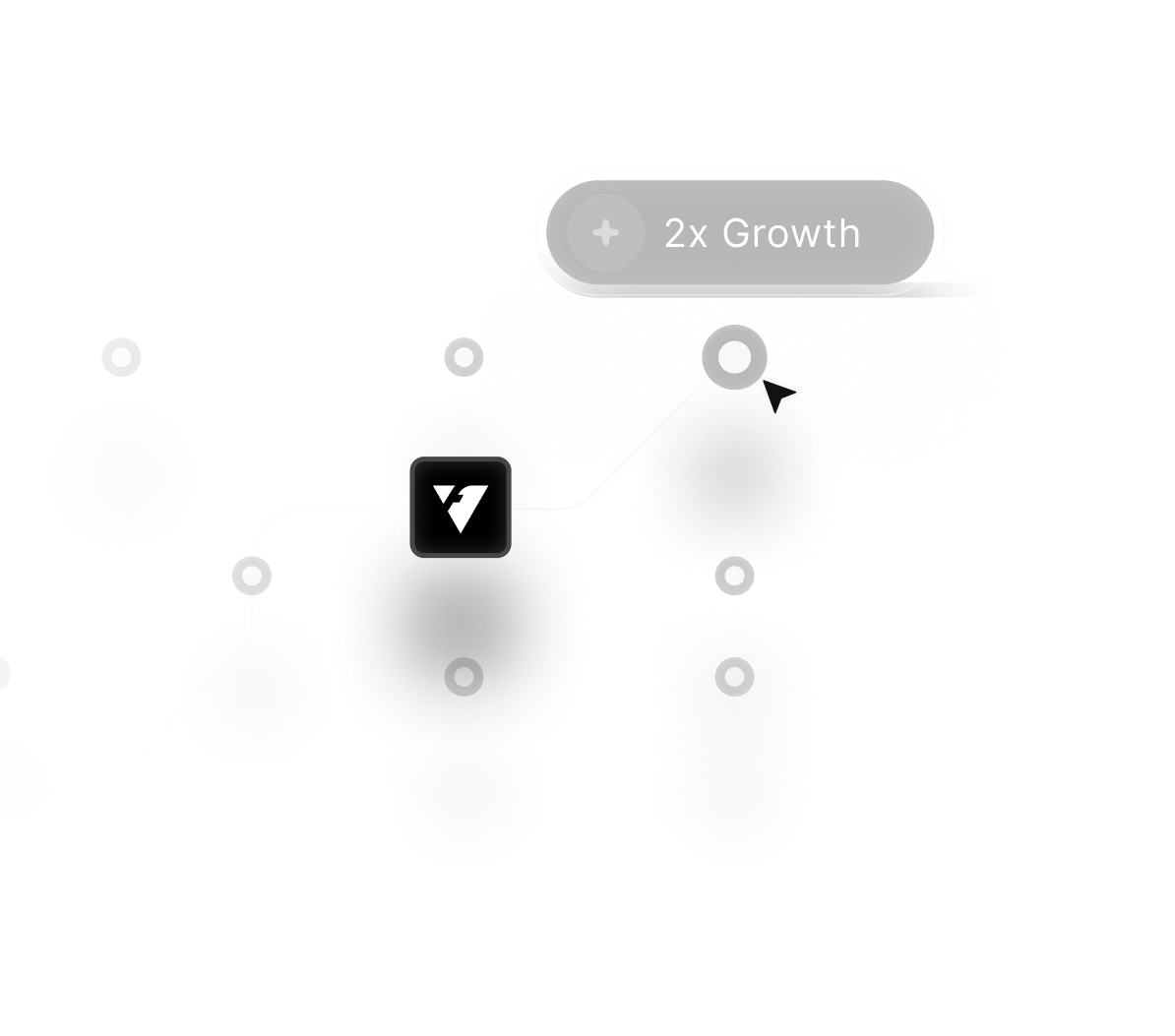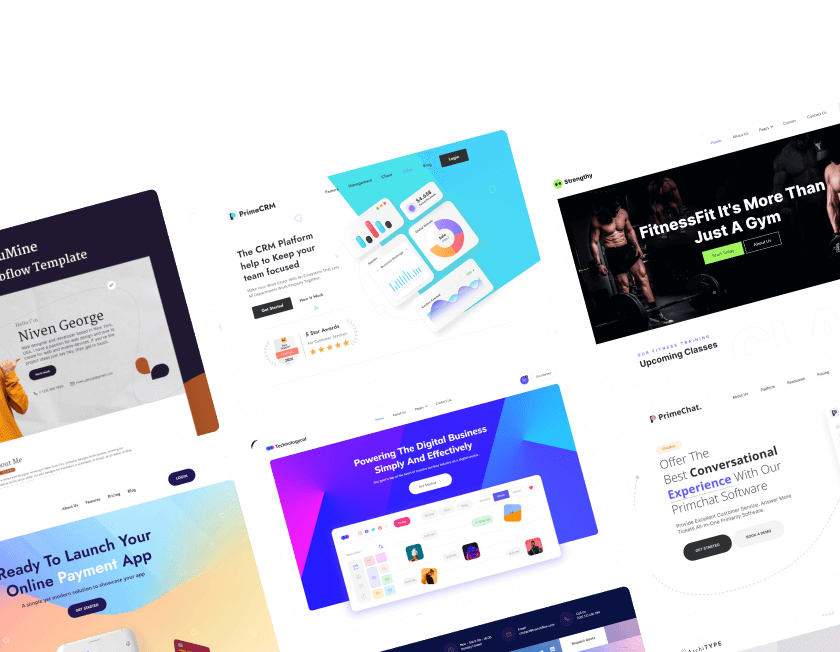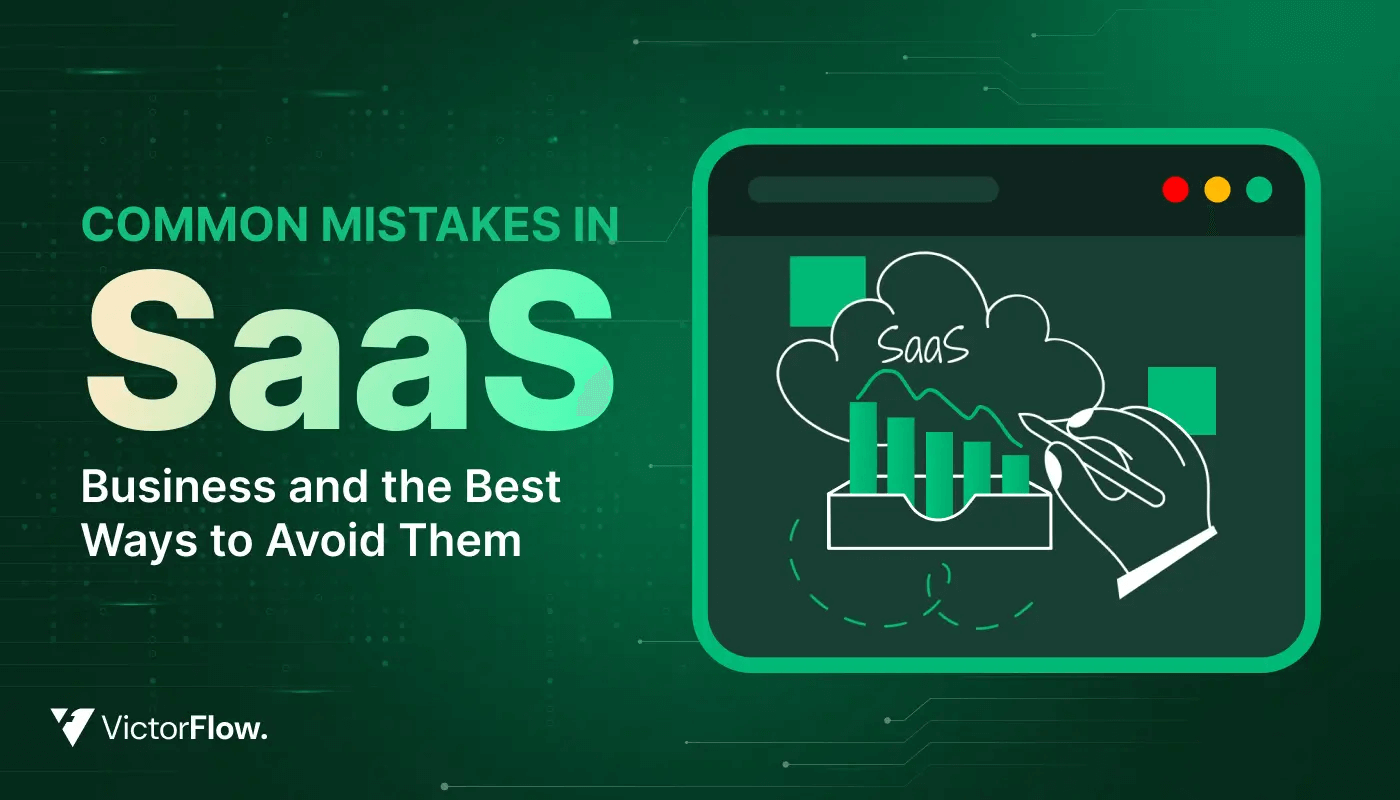
Starting and growing a SaaS business is an exciting journey, but it comes with a series of challenges that can significantly impact growth, profitability, and long-term success. Many entrepreneurs and established companies alike fall into recurring pitfalls that affect revenue, user adoption, and overall customer satisfaction, often without realizing it.
Common missteps include neglecting product-market fit, implementing confusing pricing structures, delivering inadequate onboarding experiences, and providing poor customer support, all of which can slow growth and damage a brand’s reputation.
Recognizing these errors early enables teams to refine strategies, improve operational workflows, and create meaningful, lasting relationships with clients. Proactively addressing these SaaS mistakes can enhance performance metrics, streamline internal processes, and position a company for sustainable, scalable growth.
Furthermore, understanding the root causes of these challenges allows businesses to anticipate problems, adjust their offerings, and implement solutions that maximize product adoption and user retention.
By learning from these common pitfalls and applying actionable strategies, SaaS companies can secure a competitive edge, increase revenue, and build a loyal, engaged customer base.
Ultimately, mastering how to avoid these mistakes is essential for creating a resilient, thriving software business in today’s fast-paced digital landscape.
"Ready to grow your SaaS business?
Start your free trial & see how proven strategies boost adoption, & retention."
Table of Contents
- What is a SaaS Business?
- Why SaaS Businesses Struggle?
- Key Features of a SaaS Business
- Common SaaS Mistakes
- Measuring Success: Key Metrics to Track
- Tools and Resources to Prevent SaaS Mistakes
- Case Studies of SaaS Success
- Future-Proofing Your SaaS Business
1. What is a SaaS Business?
Running a SaaS business offers incredible opportunities, but it also comes with unique challenges that can hinder growth, revenue, and customer satisfaction. Many startups and established companies alike fall into predictable pitfalls, often without realizing the long-term consequences.
From neglecting product-market fit and offering poor oboarding experiences to implementing confusing pricing strategies or providing weak customer support, these mistakes can significantly impact performance.

Avoiding common SaaS mistakes is not just about preventing losses; it also creates a foundation for scalable growth, higher customer retention, and long-term success.
This guide explores the most common SaaS errors, their impact on growth, and actionable strategies to prevent them, helping your business thrive in today’s competitive environment.
Pros of a SaaS Business:
1. Predictable Revenue
Subscription-based pricing ensures steady, recurring cash flow.
2. Accessibility
Users can access the software from any device with an internet connection.
3. Lower Upfront Costs
Customers avoid expensive one-time purchases and hardware requirements.
4. Automatic Updates
Providers roll out updates and security patches seamlessly, keeping software current.
5. Scalability
Businesses can easily increase or decrease usage according to demand.
Cons of a SaaS Business:
1. Dependence on Internet Connectivity
Without an internet connection, users cannot access the software.
2. Limited Control
Customers rely on the provider for updates, feature releases, and server maintenance.
3. Security Risks
Storing data in the cloud can expose sensitive information to potential breaches if not properly managed.
2. Why SaaS Businesses Struggle?
Many SaaS businesses face hurdles that prevent them from scaling effectively and achieving sustainable growth. Fierce competition, unclear market positioning, and weak differentiation make it difficult to attract and retain customers.
When companies fail to identify a clear product-market fit, even innovative ideas lose traction. Operational inefficiencies such as poor onboarding experiences, inconsistent customer support, and complex pricing structures often lead to user frustration and early churn.
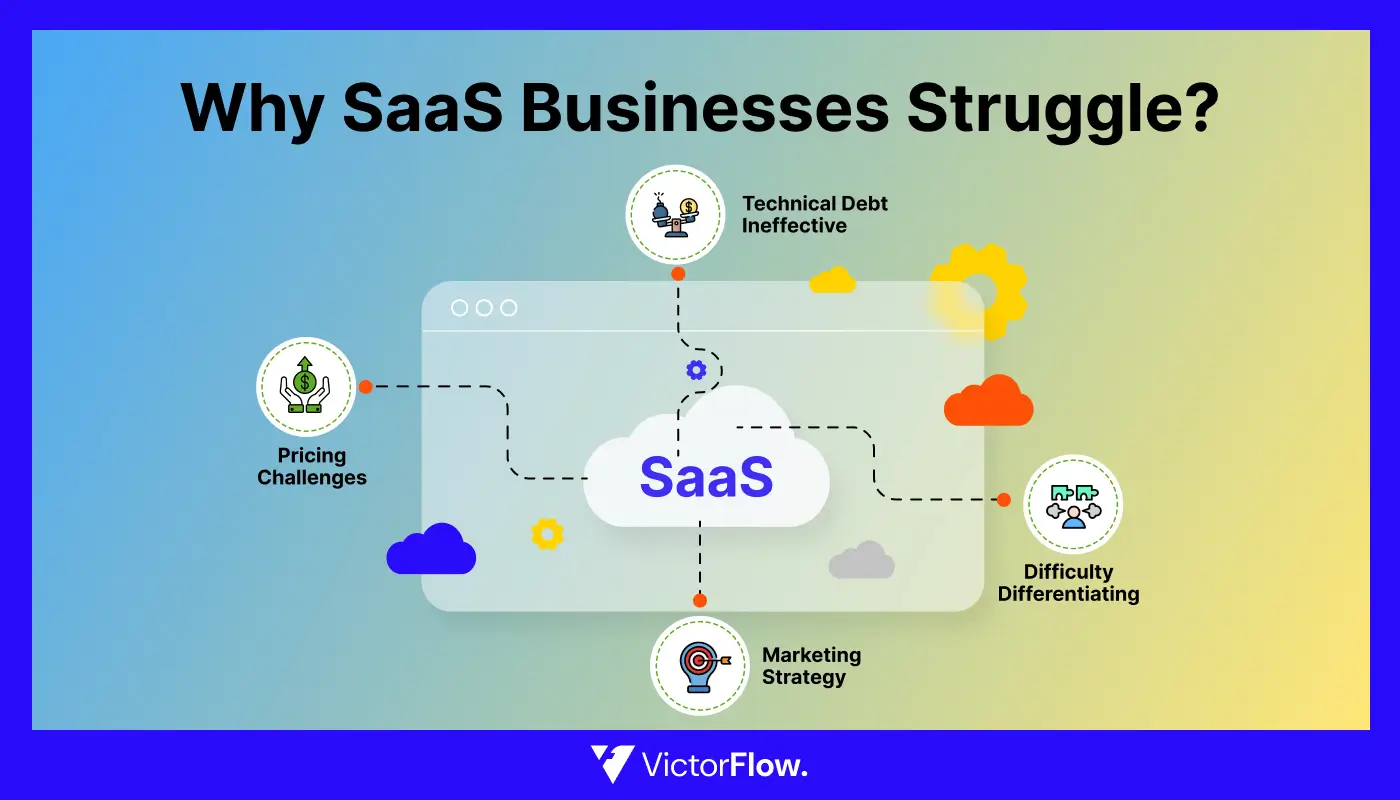
In many cases, teams invest heavily in developing new features but overlook customer feedback and engagement strategies. This results in products that fail to address real pain points or deliver measurable value.
Another common struggle lies in tracking the right performance metrics. Without focusing on KPIs like customer lifetime value (CLV), churn rate, or conversion ratio, businesses miss critical insights needed for data-driven decisions.
A successful SaaS business thrives on understanding customer needs, refining pricing strategies, and maintaining long-term relationships.
3. Key Features of a SaaS Business
A SaaS business provides software over the internet, allowing users to access applications without complex installations or maintenance. This cloud-driven approach reduces upfront costs and offers seamless scalability, making it a preferred model for modern enterprises.
SaaS platforms are built to deliver consistent performance, automatic updates, and real-time collaboration. They empower businesses to innovate quickly while maintaining security and user accessibility. A strong SaaS model blends convenience, automation, and reliability to ensure both customer satisfaction and long-term growth.
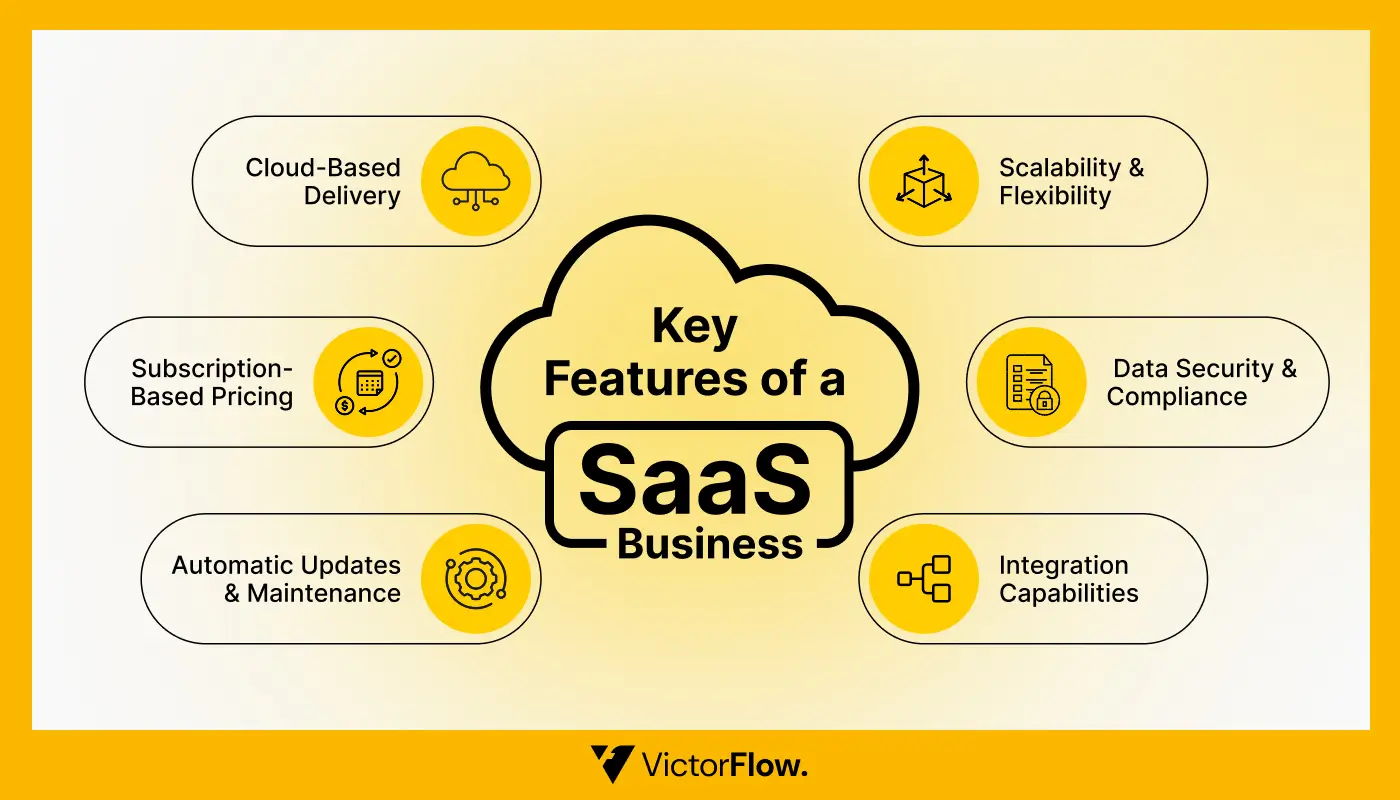
Below are the most essential features that define a successful SaaS business model:
1. Cloud-Based Delivery
All SaaS applications are hosted on remote servers and accessed through web browsers. This eliminates installation hassles, ensures global accessibility, and supports flexible work environments.
2. Subscription-Based Pricing
Customers pay recurring fees monthly or annually, creating predictable revenue for businesses. This pricing model also lowers the barrier to entry for users by avoiding heavy upfront costs.
3. Automatic Updates & Maintenance
Software updates, patches, and security improvements are handled automatically by the provider. This keeps the platform stable and secure without requiring user intervention or downtime.
4. Scalability & Flexibility
SaaS solutions grow with the user’s needs. Businesses can easily upgrade plans, add new features, or increase storage without disruption, ensuring smooth scalability for startups and enterprises alike.
5. Data Security & Compliance
Leading SaaS providers invest heavily in encryption, data backup, and compliance standards like GDPR or SOC 2. These measures build user trust and protect sensitive information across multiple devices.
6. Integration Capabilities
Modern SaaS tools integrate with other business platforms through APIs and third-party apps. This connectivity allows data synchronization, automation, and improved operational efficiency.
4. Common SaaS Mistakes
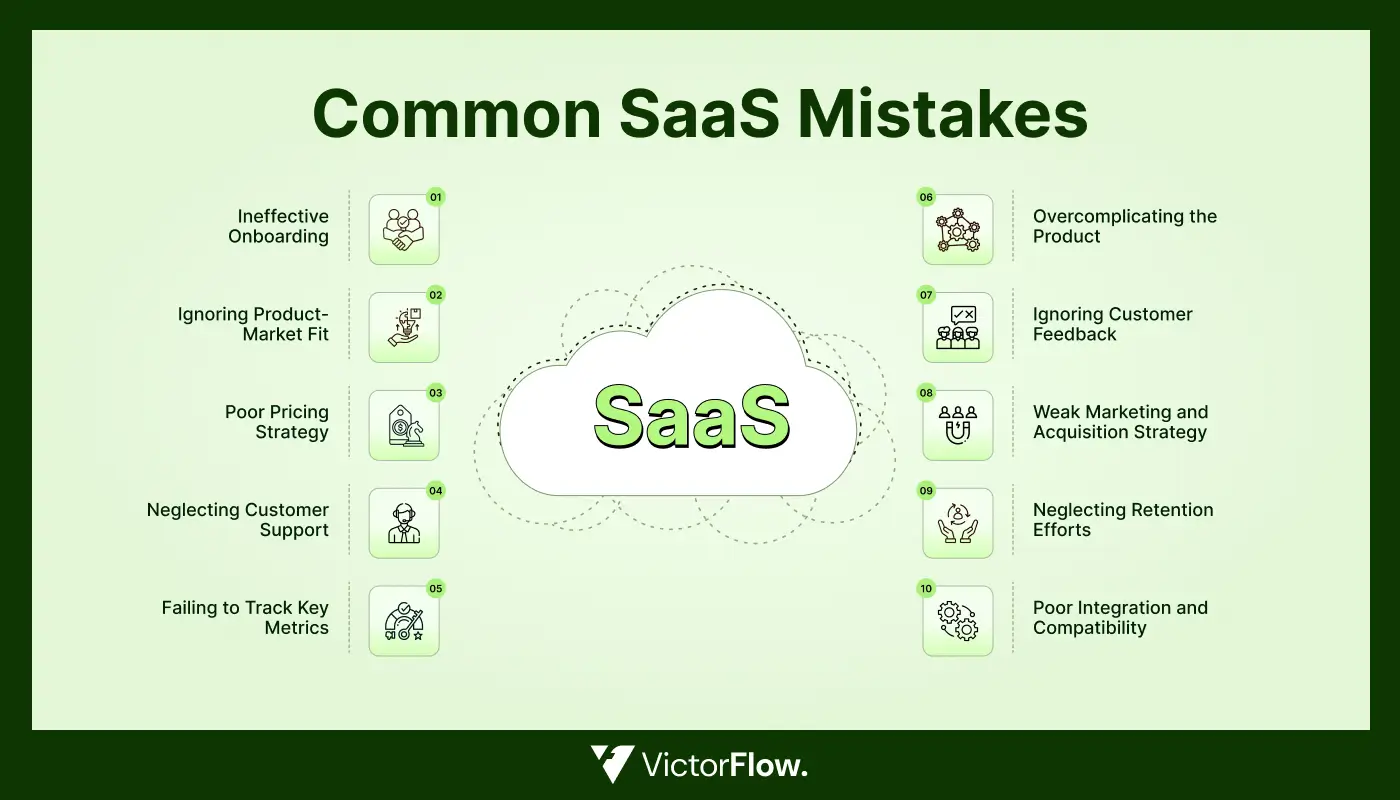
1. Ineffective Onboarding
Problem
Many SaaS platforms provide little guidance for new users. Complex interfaces, unclear navigation, or a lack of tutorials leave users unsure how to start using the software effectively.
Impact
Confused users often abandon the platform quickly, leading to high churn rates and slow adoption. Early frustration prevents customers from realizing the value of the product, harming long-term retention and revenue.
Solution
Create a structured onboarding process that guides users step by step. Use interactive tutorials, tooltips, welcome emails, and walkthroughs to ensure users quickly understand the product. Regularly collect feedback to refine the onboarding experience and reduce barriers to adoption.
2. Ignoring Product-Market Fit
Problem
Many SaaS companies launch products without validating whether they truly meet customer needs. Teams may assume that their idea automatically appeals to the market, skipping research and user feedback.
Impact
Products that do not align with market demand often experience low adoption, wasted resources, and poor early traction. This can slow growth, reduce revenue, and make it difficult to retain users.
Solution
Conduct thorough market research and validate your product before launch. Use surveys, interviews, beta testing, and minimum viable products (MVPs) to ensure the software addresses real customer pain points and fits the target market’s needs.
3. Poor Pricing Strategy
Problem
Many SaaS companies set their pricing without properly considering customer value, market standards, or competitors. Some prices are too high, which deters potential users, while others undervalue their product, limiting growth and profitability.
Impact
An ineffective pricing strategy can lead to slow user acquisition, low revenue, and difficulty scaling. Customers may perceive the product as too expensive or not worth the investment, which reduces adoption and increases churn.
Solution
Research your target market, analyze competitors, and test multiple pricing models to find the balance between value and affordability. Consider tiered pricing, freemium options, or usage-based plans to cater to different customer segments while maximizing revenue.
4. Neglecting Customer Support
Problem
Many SaaS companies fail to provide timely, helpful, and accessible support for their users. Limited channels, slow response times, or a lack of knowledge resources leave customers frustrated when they encounter issues.
Impact
Poor customer support leads to high churn rates, negative reviews, and reduced customer loyalty. Users who feel ignored are less likely to continue using the platform or recommend it to others, directly affecting growth and revenue.
Solution
Implement a multi-channel support system including chat, email, and help centers. Train support staff thoroughly and provide self-service resources such as guides and tutorials. Regularly monitor feedback to improve response times and overall customer satisfaction.
5. Failing to Track Key Metrics
Problem
Some SaaS businesses do not monitor essential performance indicators such as churn rate, monthly recurring revenue (MRR), customer lifetime value (CLV), or user engagement. This lack of data prevents teams from understanding how the product performs.
Impact
Without tracking metrics, companies miss critical insights, make uninformed decisions, and fail to identify areas needing improvement. This can lead to stagnant growth, high churn, and missed revenue opportunities.
Solution
Define and monitor key performance indicators relevant to your business goals. Use analytics tools to track adoption, engagement, and revenue trends. Regularly review this data to inform product improvements, marketing strategies, and retention efforts.
6. Overcomplicating the Product
Problem
Some SaaS companies add too many features or unnecessary functionality, believing that a feature-rich product automatically appeals to users. This can make the platform confusing and difficult to navigate.
Impact
A complicated product frustrates users, reduces adoption, and increases churn. Customers may abandon the platform if they cannot quickly understand its core value or accomplish key tasks efficiently.
Solution
Focus on simplicity and prioritize features that solve core user problems. Use user feedback to identify unnecessary elements and streamline the interface. Regularly refine the product to ensure ease of use while maintaining essential functionality.
7. Ignoring Customer Feedback
Problem
Many SaaS companies fail to actively collect and act on feedback from their users. Product decisions are often made without considering what customers actually need or want.
Impact
Ignoring feedback can lead to features that do not solve real problems, decreased user satisfaction, and higher churn. Customers may feel unheard and switch to competitors who better address their needs.
Solution
Establish regular channels for collecting feedback, such as surveys, in-app prompts, and user interviews. Analyze this data and implement changes that enhance usability and meet customer expectations, fostering loyalty and long-term engagement.
8. Weak Marketing and Acquisition Strategy
Problem
Some SaaS businesses focus heavily on product development but neglect marketing and user acquisition. Without clear messaging, positioning, and promotion, even great products struggle to attract attention.
Impact
Weak marketing leads to low user adoption, stagnant growth, and poor brand visibility. Potential customers may never discover the product, limiting revenue and market share.
Solution
Develop a comprehensive marketing strategy that includes content marketing, paid campaigns, social media, and SEO. Clearly define your target audience and messaging to reach potential users effectively. Regularly measure campaign performance and adjust tactics to optimize acquisition results.
9. Neglecting Retention Efforts
Problem
Many SaaS businesses focus primarily on acquiring new customers and overlook strategies to retain existing users. This neglect includes ignoring engagement, follow-ups, and loyalty-building initiatives.
Impact
Poor retention leads to high churn rates, reduced lifetime value, and slower growth. Acquiring new users becomes more expensive than keeping existing customers satisfied, which strains resources and limits profitability.
Solution
Implement retention strategies such as personalized communication, loyalty programs, and regular feature updates. Monitor engagement metrics, provide proactive support, and continually add value to keep customers active and satisfied.
10. Poor Integration and Compatibility
Problem
Some SaaS products do not integrate well with other tools or platforms that customers rely on. Limited API support or a lack of compatibility can create friction in users’ workflows.
Impact
Poor integration frustrates users, reduces efficiency, and decreases the perceived value of the software. Customers may abandon the product in favor of solutions that fit seamlessly into their existing systems.
Solution
Design your SaaS platform with robust API support and ensure compatibility with popular tools. Offer pre-built integrations and regular updates to expand connectivity. By enabling seamless workflows, users can maximize the software’s value and maintain long-term satisfaction.
5. Measuring Success: Key Metrics to Track
Tracking the right key metrics is essential for evaluating the health and growth of a SaaS business. Accurate measurement helps companies make informed decisions, optimize strategies, and identify opportunities for improvement. Monitoring these metrics consistently ensures better customer satisfaction, higher retention, and stronger revenue performance over time.

Top Key Metrics For SaaS Success:
1. Monthly Recurring Revenue (MRR)
Measures the predictable revenue generated each month. Tracking MRR helps monitor growth trends and forecast financial performance.
2. Customer Churn Rate
Indicates the percentage of customers leaving your platform. High churn signals dissatisfaction or unmet needs, allowing early intervention.
3. Customer Lifetime Value (CLV)
Estimates the total revenue a customer generates over their relationship with your business. Optimizing CLV ensures sustainable growth.
4. Customer Acquisition Cost (CAC)
Calculates the cost to acquire a new customer. Comparing CAC to CLV ensures marketing and sales efficiency.
5. Net Promoter Score (NPS)
Measures customer satisfaction and likelihood to recommend your product. High scores indicate strong loyalty and advocacy.
6. Active Users (DAU/MAU)
Tracks engagement and usage patterns. Frequent usage reflects product value and customer satisfaction.
6. Tools and Resources to Prevent SaaS Mistakes
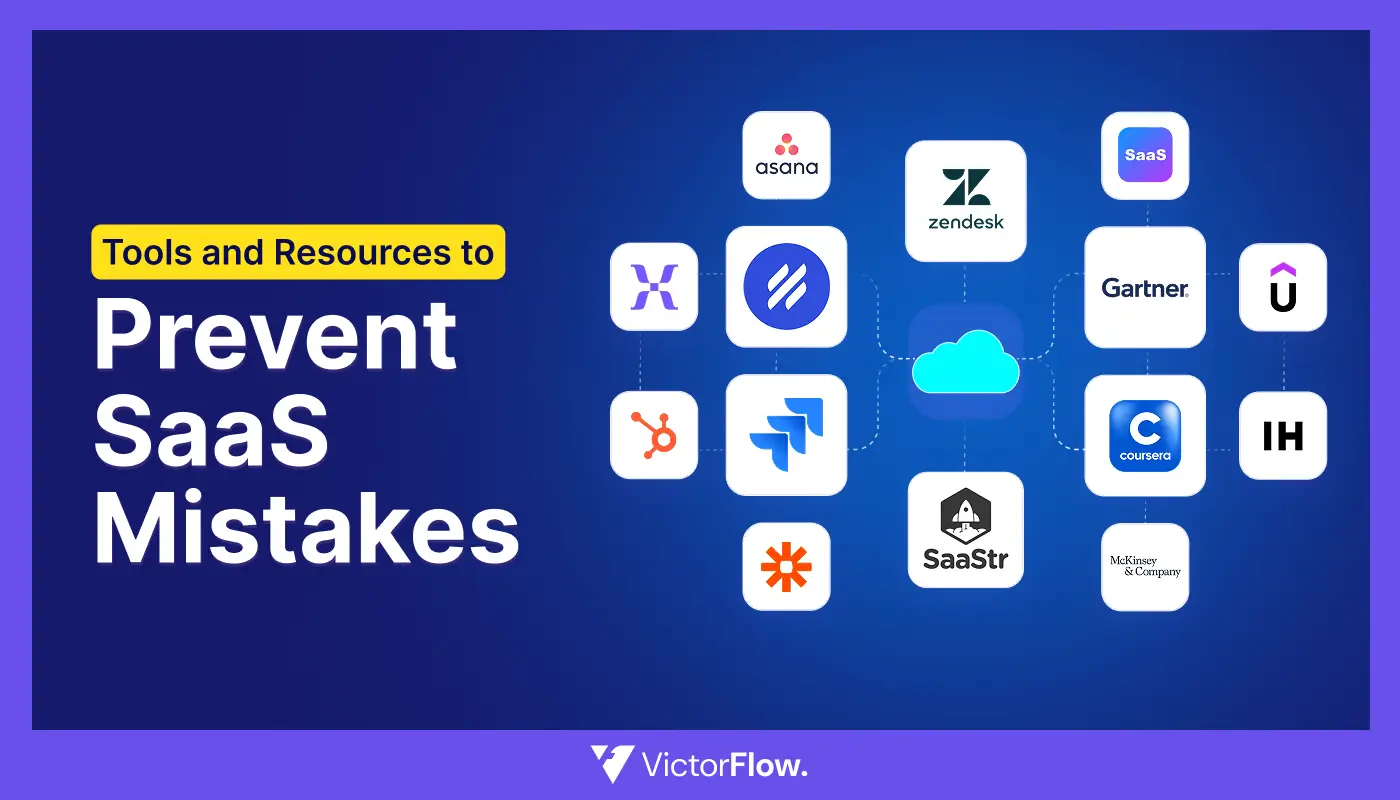
6.1 Tools to Prevent SaaS Mistakes
1. Product Analytics Tools
Track user behavior, engagement, and feature usage.
- Examples: Mixpanel, Amplitude, Google Analytics.
2. Customer Feedback Platforms
Collect surveys, polls, and in-app feedback to understand user needs.
- Examples: Typeform, SurveyMonkey, Intercom.
3. Customer Support Solutions
Provide multi-channel support and knowledge bases to reduce churn.
- Examples: Zendesk, Freshdesk, Help Scout.
4. Marketing Automation Platforms
Automate email campaigns, lead nurturing, and segmentation.
- Examples: HubSpot, Mailchimp, Marketo.
5. Project Management & Collaboration Tools
Coordinate teams and manage product development efficiently.
- Examples: Asana, Trello, Jira.
6. Pricing & Revenue Optimization Tools
Optimize subscription management and pricing strategies.
- Examples: ProfitWell, Chargebee, Paddle.
7. Integration & API Management Tools
Ensure seamless connectivity with other apps and platforms.
- Examples: Zapier, Make (Integromat), Postman.
6.2 Resources to Prevent SaaS Mistakes
1. Blogs and Communities
Stay updated on best practices, industry insights, and case studies.
- Examples: SaaStr, For Entrepreneurs, Indie Hackers.
2. Online Courses & Webinars
Learn SaaS management, analytics, and growth strategies.
- Examples: Coursera, Udemy, LinkedIn Learning.
3. Templates & Checklists
Use structured workflows for onboarding, marketing, and product releases.
- Examples: Onboarding templates, marketing campaign checklists, and feature release checklists.
4. Industry Reports & Case Studies
Gain insights from market research, trends, and competitor strategies.
- Examples: Gartner reports, McKinsey SaaS studies.
5. SaaS Newsletters & Podcasts
Keep informed on emerging trends and strategies from SaaS experts.
- Examples: SaaS Weekly, The SaaS Podcast.
7. Case Studies of SaaS Success
Successful SaaS companies like @VictorFlow provide a roadmap for achieving adoption, retention, and revenue growth. Their journeys showcase the importance of solving real problems and listening to customers. Studying these case studies helps businesses implement proven strategies and avoid costly mistakes.
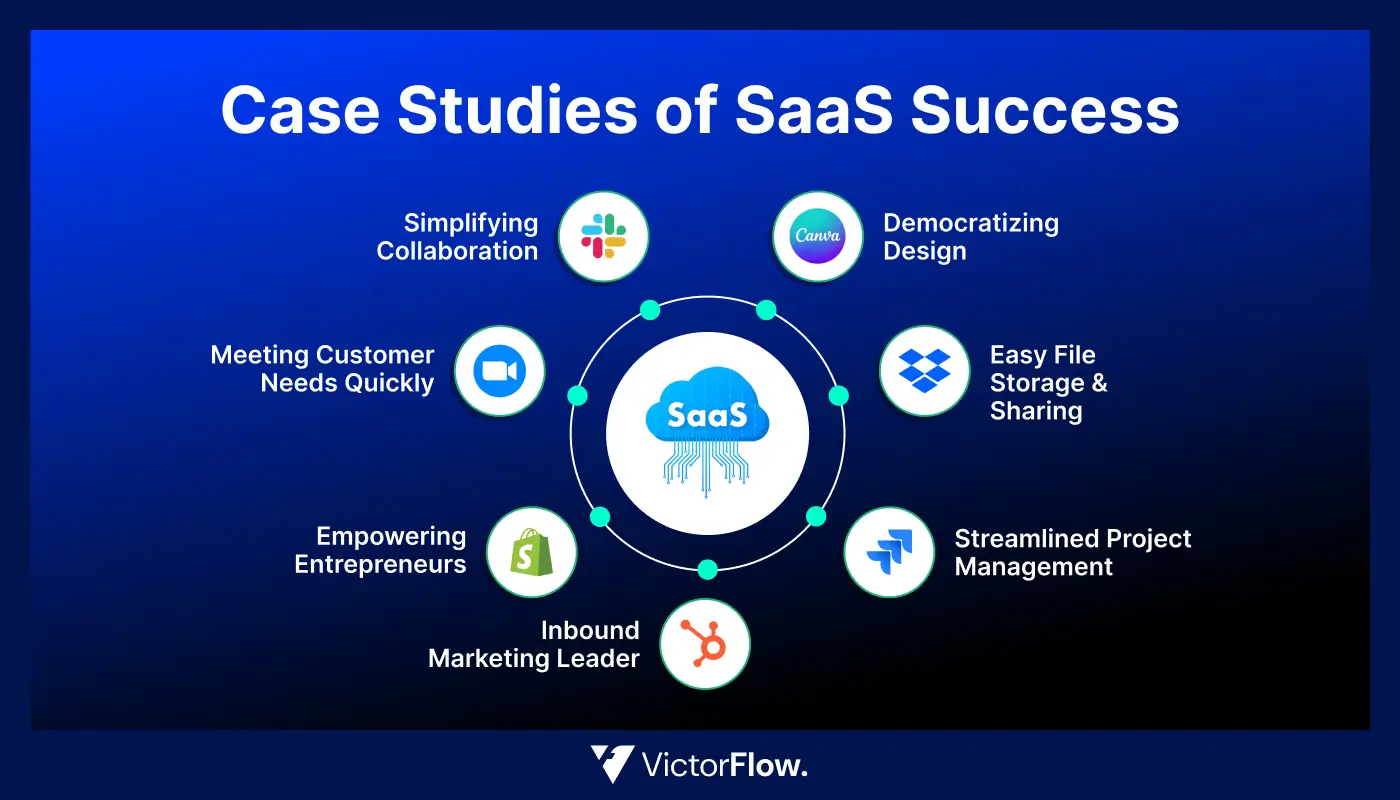
1. Slack - Simplifying Collaboration
Focused on ease of use and seamless integration, Slack grew rapidly by providing intuitive workplace communication and strong onboarding.
2. Zoom - Meeting Customer Needs Quickly
Zoom prioritized reliability and simplicity, scaling fast by solving core video conferencing challenges for businesses worldwide.
3. Shopify - Empowering Entrepreneurs
Shopify offers flexible e-commerce solutions and educational resources, driving loyalty and helping businesses grow online.
4. HubSpot - Inbound Marketing Leader
HubSpot emphasized customer education and onboarding, building trust while providing a full-suite marketing platform.
5. Canva - Democratizing Design
Canva simplified graphic design with drag-and-drop tools, templates, and collaboration features, enabling widespread adoption.
6. Dropbox - Easy File Storage & Sharing
Dropbox grew by offering simple, reliable cloud storage and seamless cross-platform syncing, ensuring user satisfaction.
7. Atlassian (Trello & Jira) - Streamlined Project Management
Atlassian tools focus on workflow efficiency and team collaboration, providing customizable solutions for different business needs.
Key Takeaways:
- Solve a real user problem.
- Offer intuitive onboarding and support.
- Provide continuous improvement and integrations.
- Educate users to enhance engagement and loyalty.
8. Future-Proofing Your SaaS Business
Building a successful SaaS business today is not enough; companies must plan for the future to remain competitive. Market trends, technology changes, and evolving customer expectations require proactive strategies that ensure long-term growth and sustainability.
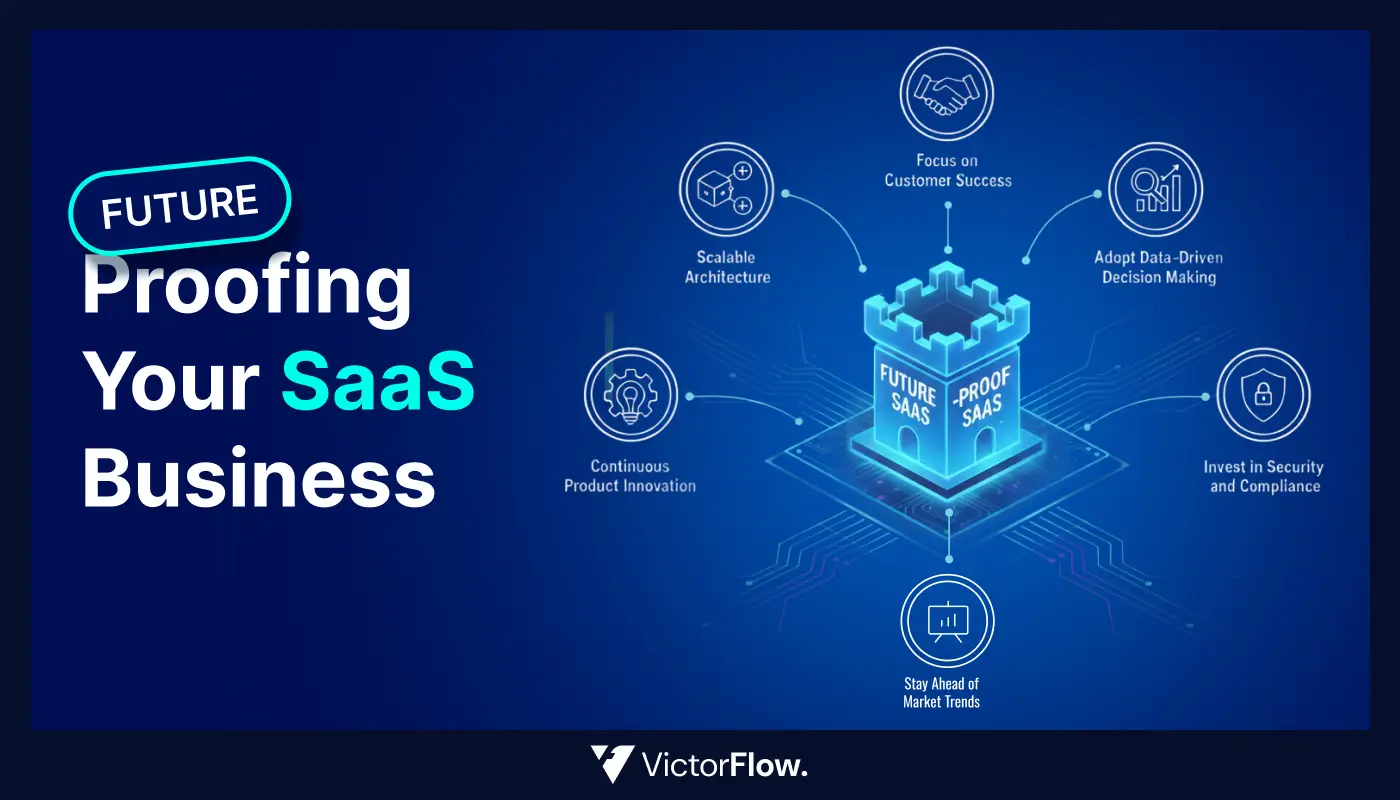
Key Strategies to Future-Proof Your SaaS Business:
1. Continuous Product Innovation
Regularly update your platform to meet changing user needs. Introduce new features, improve usability, and adopt emerging technologies to stay ahead.
2. Scalable Architecture
Design your infrastructure to handle growth seamlessly. Cloud-based solutions, modular design, and robust APIs ensure your platform can scale without disruption.
3. Focus on Customer Success
Invest in customer education, support, and engagement programs. Satisfied customers are more likely to stay loyal and recommend your product.
4. Adopt Data-Driven Decision Making
Use analytics to track user behavior, feature adoption, and churn. Make informed decisions to optimize performance and anticipate market changes.
5. Stay Ahead of Market Trends
Monitor competitors, industry innovations, and emerging technologies. Adapt quickly to trends like AI, automation, and integrations to maintain relevance.
6. Invest in Security and Compliance
Protect user data and comply with regulations. Strong security practices build trust and prevent reputational or financial damage.
Conclusion
Successful SaaS companies achieve sustainable growth by delivering experiences that consistently meet user expectations while adding value at every touchpoint.
Ensuring customer satisfaction, engagement, and seamless usability helps maintain high adoption rates and fosters long-term loyalty.
Tracking key metrics, utilizing the right tools and resources, and learning from real-world case studies provide actionable insights that guide product enhancements and business strategies.
Emphasizing solutions that simplify workflows and enhance user interactions builds trust, strengthens relationships, and encourages advocacy.
Continuous adaptation to market trends, proactive problem-solving, and commitment to quality ensure SaaS businesses remain competitive and resilient.
At VictorFlow, we not only help SaaS companies maximize engagement and accelerate growth, but we also provide ongoing support, actionable insights, and tailored strategies to empower your business. Our goal is to partner with you to enhance customer experiences, drive conversions, and ensure your SaaS platform thrives in a dynamic, competitive market.

FAQ
1. What is SaaS (Software as a Service)?
SaaS is a cloud-based software delivery model accessed via subscription. Users don’t need to install or maintain software locally. Updates, security, and infrastructure are managed by the provider.
2. How does your SaaS platform work?
The platform is accessed through a secure login and runs entirely online. Updates and maintenance are handled automatically. Integration with existing tools ensures smooth workflows.
3. What are the benefits of using your SaaS solution?
SaaS offers cost savings by eliminating hardware needs, easy scalability, and access from anywhere. Automatic updates keep the software current. Strong security protects user data.
4. Do you offer a free trial or demo?
Yes, a free trial or demo lets you explore all features without commitment. Our support team guides you throughout. You can test the platform’s capabilities before subscribing.
5. What pricing plans do you offer?
We provide flexible plans for startups, growing teams, and enterprises. Each plan includes essential features, with discounts available for annual subscriptions. Plans scale as your business grows.
6. How do I get started?
Sign up for a free trial or demo to begin. Set up your account and connect with any existing tools. Our support and resources help you maximize the platform’s value.
Table of Contents
Choose Our Service, Grow Fast!
Follow Us
Related Posts

Power up game projects online using Webflow templates offering stunning transitions, character showcases, and responsive interfaces attractively.
Power up game projects online using Webflow templates offering stunning transitions, character showcases, and responsive interfaces attractively.

.png)
December 11, 2025
Webflow and Framer templates deliver modern layouts, fast performance, and flexible customization, offering creators polished designs that elevate branding and user experience instantly.
Webflow and Framer templates deliver modern layouts, fast performance, and flexible customization, offering creators polished designs that elevate branding and user experience instantly.

%202025.webp)
Discover the 40+ best Webflow templates for 2025, featuring top free & paid options perfect for web design, including the best free and premium Webflow website templates.
Discover the 40+ best Webflow templates for 2025, featuring top free & paid options perfect for web design, including the best free and premium Webflow website templates.

Ready to Scale Your Project to the Next Level?
Let's take your project to new heights, reach out and see how we can help you.
